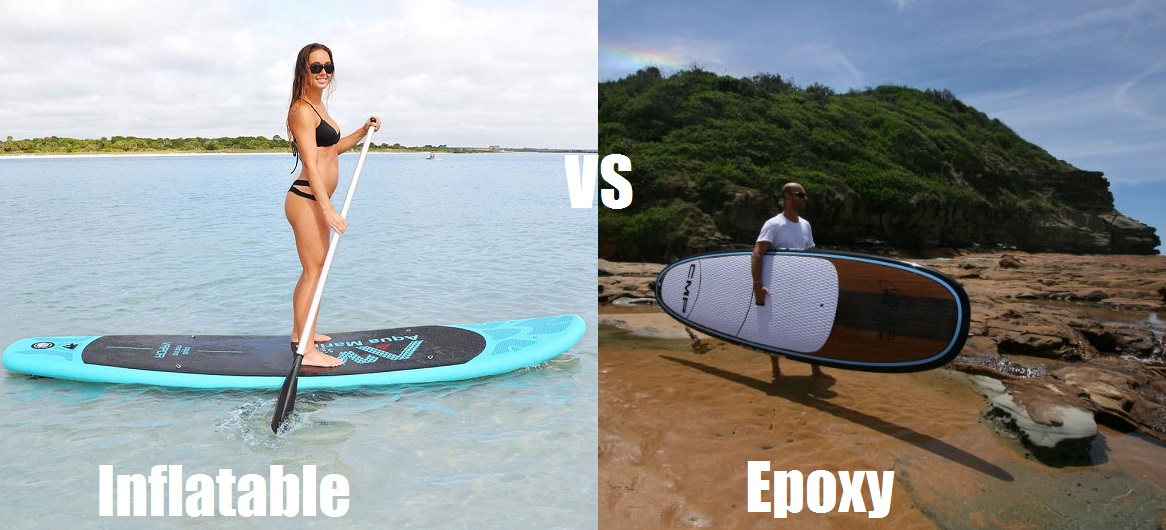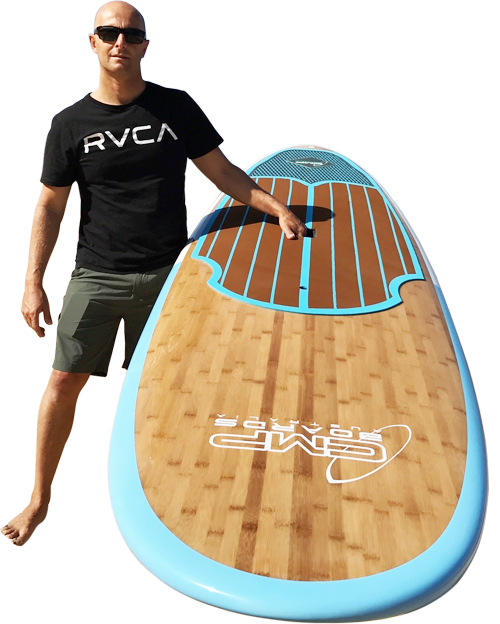
How to choose between Epoxy SUP and Inflatable SUP paddle boards
With both Epoxy SUP and Inflatable SUP boards providing their own individual set of benefits, it can be a difficult choice in deciding which type best fits your individual needs and priorities.
If you’re looking for ease of convenience, then an inflatable SUP offers a greater advantage. But if you don’t have the time to set up an inflatable board every time you go out and want to get on the water straight away then a rigid board provides better advantages. Performance, comfort, storage and convenient conveyance are some of the other important criteria that your purchasing choice depends on. Let’s have a closer look.
Performance
When it comes to purchasing the right SUP board the single most important criteria is performance. Developments in the design of inflatable boards have improved its rigidity to make them nearly similar to epoxy boards. However traditional boards still offer relatively improved responsiveness and overall feel.
Comfort
Inflatable boards offer more comfort especially if you will be paddling standing up for long periods. Epoxy, on the other hand, offers a smoother glide and better response when turning. In our experience, paddlers performing competitively will enjoy the better speed and responsiveness provided by a traditional rigid board.
Construction
The construction of traditional rigid paddle boards is done with composite layers of materials around a foam core. This solid construction allows for more overall volume that is better suited for carrying heavier paddlers. Inflatables feature a highly durable robust rubber material with “drop stitch” technology to promote its stability – almost as high as 90% compared to rigid boards.
Storage
If you’re leaning towards a traditional board, you will need to have adequate clearance space to store it when not in use. Measuring available space is critical when choosing your board. Nothing worse than arriving home with your new board only to find it doesn’t fit in the garage. Inflatables makes storage issues a lot simpler. Deflate, roll up and in a bag it goes. Just make sure that before storing, the SUP is completely dry.
Travel
Traditional boards can be a bit of a challenge when it comes to transporting them over long distances. By road you would need factory-installed cross bars on vehicles. Flying with your board may require paying additional fees and buying a quality travel bag. Inflatable SUPs don’t require as much consideration. Deflated boards can be easily packed along in your luggage.
Repairs
As robust as epoxy boards are they, too, are susceptible to scratches and dents. Superficial scratches may reduce aesthetics but do not impact on performance unlike deeper dents and dings that can allow moisture to seep into the core. Repairs can be made yourself with a DIY kit or you can have it attended to at a reliable SUP repair shop. Inflatable SUPs are purchased with a repair kit included. At most you will probably only use this kit to fix small holes. Some issues are covered by the warranty so check this carefully.
Now that you know what the major differences, benefits and advantages are between the two paddle board types, it makes it easier to choose between inflatable SUP and epoxy SUP.
Love the outdoors? You will love our outdoor adventures products range. Weekend Warrior Outdoors supplies top quality products at affordable prices to you.







